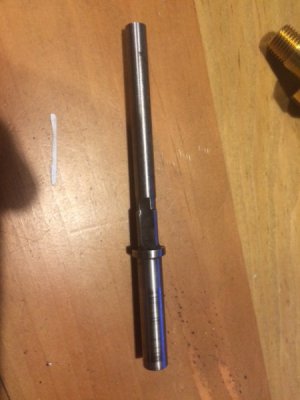- Joined
- Feb 9, 2017
- Messages
- 5,523
Back in my dark days as a line mechanic I used to do that process. I was cornered into it because of on my VW's the spring return side of the carb body would wear out and cause a vacuum leak. This would cause all kinds of mayhem with the idle mix and actually in running as this was unmetered air making one side of the engine(cyls 3&4) run leaner and even hotter. Making an already bad situation even worse. One day a salesman for an outfit that sold the "kit" for installing brass bushings came through and I bought the kit. It had nothing for actually aligning and drilling the holes. I ended up making a jig out of some 6x6 precision ground aluminum angle as the base and one of those drill guides. I used a reamer of the original size of the shaft to set up the carb body and drill guide and clamped the carb and guide. Then drilled the body. Installed the bushing and then ream to size. The other tricky thing is to remove the butterfly. Removing the screws without destroying the shaft is a trick. I used brass screws to replace the old ones and then peen them in so they don't vibrate loose. After it worked so good with my old VW I started doing QuadraJunk's so they could pass smog and got to where the Chevy garage came to me to fix their QJ's.

